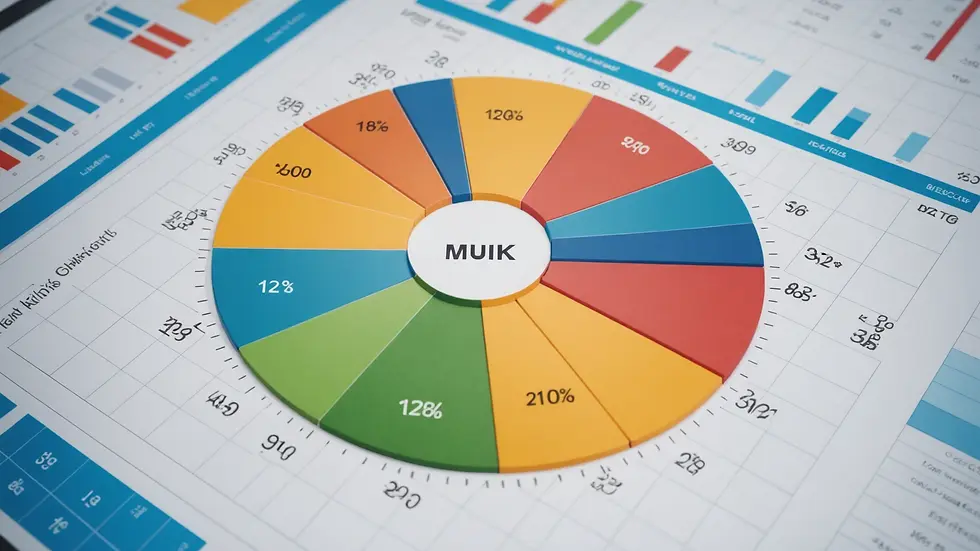Unleashing the Untapped Potential: How Data Can Catapult Your Business Growth
- Reese Robertson
- Dec 16, 2024
- 4 min read
In a world where information is everywhere, businesses that fail to harness data risk being left behind. The information age presents companies with a powerful tool—data—that can be transformed into insights for growth and success. This article explores how businesses can effectively utilize data analytics to propel their growth through practical examples and actionable strategies.
Understanding the Power of Data Analytics
Data analytics refers to the systematic analysis of data to find trends, correlations, and insights. By dissecting data sets, organizations can uncover valuable information that can drive meaningful changes.
The benefits of data analytics are extensive:
Informed Decision-Making: Data provides decision-makers with factual insights, leading to improved choices in everything from strategic initiatives to daily tasks.
Customer Insights: Analysis of data allows businesses to better understand customer behaviors, preferences, and trends, ultimately enhancing customer satisfaction levels.
Efficiency Improvements: Identifying delays and inefficiencies through data can help businesses streamline operations and lower costs.
Competitive Advantage: Companies adept in data analytics can outperform competitors by anticipating market trends and consumer demands.
As more companies recognize the benefits of harnessing data, those that adopt these strategies are more likely to achieve sustained growth.

Case Studies of Data-Driven Decision-Making
To highlight the real-world impact of data analytics, we can look at several case studies across different industries. These examples demonstrate how organizations have embraced data to drive innovation and growth.
1. Netflix: Personalization at Its Best
Netflix uses data analytics to deeply understand viewer preferences. By analyzing millions of data points related to viewing habits, demographics, and even viewing times, Netflix tailors content recommendations for users. This personalized approach not only boosts viewer retention but also increases engagement.
For instance, Netflix reported that its recommendation algorithm drives over 80% of the content streamed on its platform. This high figure underscores the importance of personalization in customer engagement and subscription growth.
2. Amazon: The Power of Predictive Analytics
Amazon excels in using predictive analytics for inventory management and enhancing shopping experiences. By scrutinizing user purchase history and browsing patterns, Amazon predicts what customers are likely to buy next.
This strategy has led to substantial revenue growth. According to reports, 35% of Amazon’s sales are attributed to its recommendation system. The ability to foresee customer needs fosters loyalty and encourages repeat purchases.
3. Coca-Cola: Enhancing Customer Engagement through Feedback
Coca-Cola leverages data analytics for enhancing customer engagement. By collecting and analyzing feedback from various platforms, the company identifies consumer preferences and areas needing improvement.
For example, the "Coke Flavor" line emerged after analyzing consumer trends on social media and sales data, showcasing how data can drive product innovation. This responsiveness has solidified Coca-Cola's standing as a market leader.
4. Walmart: Supply Chain Optimization
Walmart utilizes data analytics to fine-tune its supply chain operations. By gathering large datasets from stores and suppliers, Walmart can manage inventory more effectively and minimize stockouts.
Notably, Walmart claimed that its real-time data analysis allows them to handle over 1 million items in its inventory daily. This capacity maximizes sales and enhances customer satisfaction. Efficient supply chain practices also help reduce waste, improving profitability.
Practical Tips for Utilizing Data Insights in Business Strategies
With a clearer understanding of how data can drive success, let’s move on to practical steps businesses can implement to make the most of data analytics.
1. Establish Clear Objectives
Before diving in, define your goals for data analytics. Whether it’s boosting sales, enhancing customer experiences, or improving operations, know what you want to achieve. This focus guides your data collection and analysis efforts.
2. Choose the Right Tools
Selecting suitable tools for data analysis is critical. From simple spreadsheet programs to advanced analytics platforms, the right choice depends on your specific needs and budget.
3. Invest in Training
To thrive in data analytics, your team needs the right skills. Invest in training your employees so they can effectively use data analysis tools, learn visualization techniques, and understand data management.
4. Collect Quality Data
The effectiveness of your analysis depends on data quality. Ensure robust methods for data collection and validation are in place. Regularly clean datasets and monitor data integrity to ensure accuracy.
5. Foster a Culture of Data-Driven Decision-Making
Creating a data-driven culture requires leadership support. Encourage all employees to utilize data in their daily decisions. Easy access to analytics tools can promote a mindset where data insights are respected and valued.
6. Visualize Data for Clarity
Using data visualization tools can turn complicated datasets into understandable insights. Graphs, charts, and dashboards make it easier to digest information and allow for quicker, informed decisions.
7. Monitor and Adjust
After initiating data-driven strategies, it's crucial to track their success. Examine performance metrics regularly and refine strategies based on data insights. Businesses must be adaptable to stay relevant in changing market environments.

Final Thoughts
Embracing data analytics is no longer optional in today’s business environment; it’s vital. The examples of Netflix, Amazon, Coca-Cola, and Walmart show how strategic use of data can lead to substantial growth and success.
By following practical advice, businesses can build a solid foundation for data analytics that aligns with their strategic goals. Seize the untapped potential of data; let it guide your business toward a successful future.


Comments